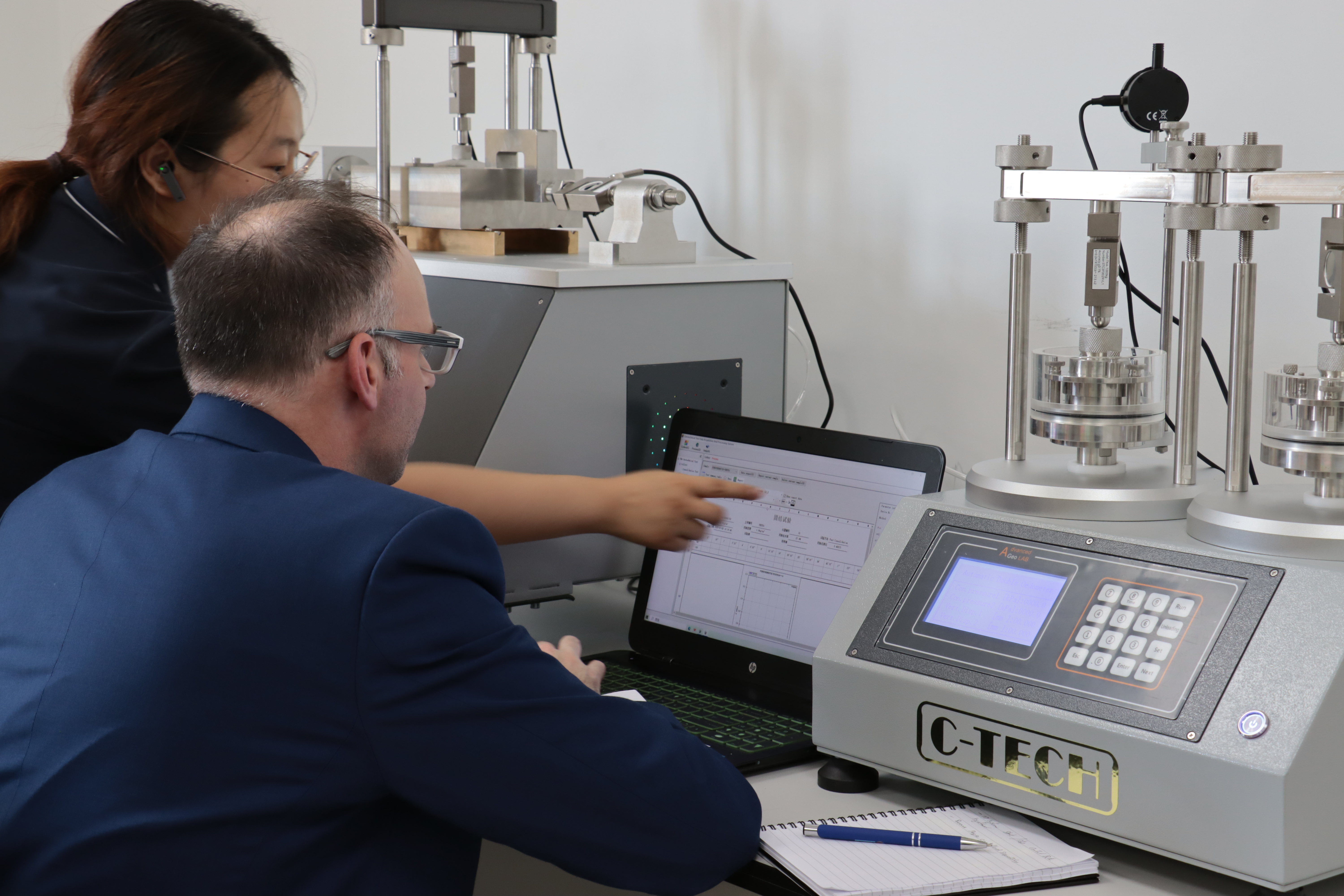We were honoured to host a distinguished scholar from Queen's University Belfast, for a comprehensive technical exchange last week. The visit showcased our advanced research capabilities through the perspective of an internationally respected authority in geotechnical engineering.
Upon commencing his tour of our equipment exhibition area, Professor expressed immediate appreciation for the breadth of our product portfolio, noting the comprehensive scope of testing solutions on display. His technical curiosity became particularly evident when encountering the End-over-End Shaker System, where he paused for extended examination of its operational mechanisms. Adjusting his spectacles to scrutinize the vibration-dampening mounts, he inquired about material selection criteria, visibly impressed by the ingenuity of its mechanical design.
After that, Professor toured our testing facilities with particular interest in the Automatic triaxial testing system and Pneumatic consolidation apparatus During live demonstrations, he observed Senior Engineer Li's team conducting precision tests on clay specimens under varying pressure conditions. The professor spent considerable time examining the equipment's hydraulic feedback mechanisms and real-time data acquisition interfaces, expressing admiration for their engineering sophistication. While observing the Automated Soil Triaxial System, he maintained meticulous handwritten notes in a leather-bound journal, frequently pausing to sketch hydraulic control interfaces. The laboratory immersion transitioned into an exclusive technical dialogue where Professor analyzed experimental results with Engineer Li and operations team members.
These shared observations flowed naturally into discussions about operational best practices, where Professor highlighted several features he found particularly impressive: The intuitive automation interfaces and the intrinsic precision of the instrumentation at a technical level. Professor Black expressed considerable admiration for the exceptional precision and advanced engineering of our testing systems, commending both the equipment's reliability and our operators' mastery of complex test. Engineer Li later reflected that the professor's observational insights provided valuable perspective on international testing benchmarks.
The visit culminated in a cordial exchange of commemorative tokens symbolizing mutual professional regard, followed by a group photograph capturing the collegial spirit of the engagement. These proceedings served as a meaningful testament to the productive dialogue achieved throughout the day, marking a milestone in our ongoing technical relationship with the international soil mechanics community.


